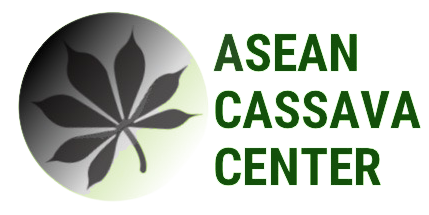Myanmar: Cassava Cultivation Situation
.jpg)
Cassava cultivation
Cassava cultivation in Myanmar has a long history, dating back to the 1850s, with commercial production starting in 1946-1947 in Tanintharyi Township. The Tanintharyi region was the leading cassava-growing area until 1979. After that, the cassava plantation area in Myanmar has been changing year by year. Cassava is primarily cultivated using traditional methods in Myanmar. Farmers grow cassava stalks on small soil mounds, with spacing varying based on preferences, typically 5ft * 5ft. Most cultivation is rain-fed, with land preparation starting in late April and planting in May and June when the first rains arrive. Some farmers prepare their land in early April if they receive early rains.
Cassava stalk preparation in Myanmar
For replanting, cassava stalks are piled in the field, covered with banana leaves, or stored under shady trees for 3 to 4 months. Farmers use knives to cut the stalks for planting, with a typical length of 6-9 inches.
Fertilizer Application
Fertilizer application varies by region, but urea (N) is commonly used. Some farmers also apply phosphate fertilizer. Potassium (K) fertilizer, such as KCL, is rarely used. The fertilizer dosage is around 1-2 bags of 50kg urea per acre or 2 bags of urea and 1 bag of single superphosphate or triple superphosphate. In recent years, some farmers have started using compound fertilizers like 10-10-5 and 15-15-15.
Pest and Diseases of Cassava in Myanmar
Pest and disease issues in Myanmar are relatively mild. Mealybug infections occasionally occur but are not serious. Cassava bacterial blight and witches' broom diseases have low infection rates. Cassava mosaic disease (CMD) has not been reported in Myanmar.
Import, export and Domestic used of cassava
The cassava produced in Myanmar is mainly used domestically. Over 80% of fresh roots are used in domestic cassava starch processing factories. A small percentage goes to cassava chips production, and the rest is used in local snack food production and regional food consumption.
The main problems in Cassava Cultivation and Consumption in Myanmar
- Lack of Technical Knowledge: Many farmers lack proper knowledge of Good Cassava Cultivation Practices, which hinders their productivity.
- Limited Access to Finance: Cassava growers face difficulties in accessing finance to purchase recommended NPK fertilizers and use tractor services for advanced technology.
- High-Yield Varieties: There is a need for the multiplication and distribution of high-yield cassava varieties to improve crop yields.
- Unstable Market: The cassava root market in Myanmar is unstable, posing challenges for growers.
Opportunity, barrier or driving force from government policy
Government policies related to cassava have not historically provided significant support. However, since 2014, the regional government in Ayeyarwaddy has recognized the economic potential of cassava and taken steps to promote its cultivation. These initiatives include the formation of Cassava Growers, Millers, and Traders Associations, support for farmer meetings and field days, and increased attention to cassava as an economically important crop.
The policy supports the Cassava Cultivation technology in Myanmar
In Myanmar, private companies like Yuzana Co., Ltd. in Kachin State are implementing modern cassava cultivation technologies, employing tractors for land preparation and harvesting. In Ayeyarwaddy Region, the Cassava Growers, Millers, and Traders Association collaborate with international organizations to disseminate advanced cassava cultivation techniques. Areas for improvement include drip irrigation, machine utilization, soil test-based fertilization, and smart technology integration. There's a growing recognition of cassava's economic importance in Myanmar, with regional governments and private firms supporting cultivation and technology adoption.
SWOT Analysis
Myanmar's cassava cultivation strengths include a cassava association, minimal pests and diseases, ample suitable land, and export potential. Weaknesses involve poor government collaboration, limited support for technology, unclear policies, low-yield local varieties, and inadequate machine services. Opportunities include improved farmer credit, empowerment, and eco-friendly production. Threats consist of limited R&D, environmental issues from processing waste, and inadequate government leadership in the cassava sector.
